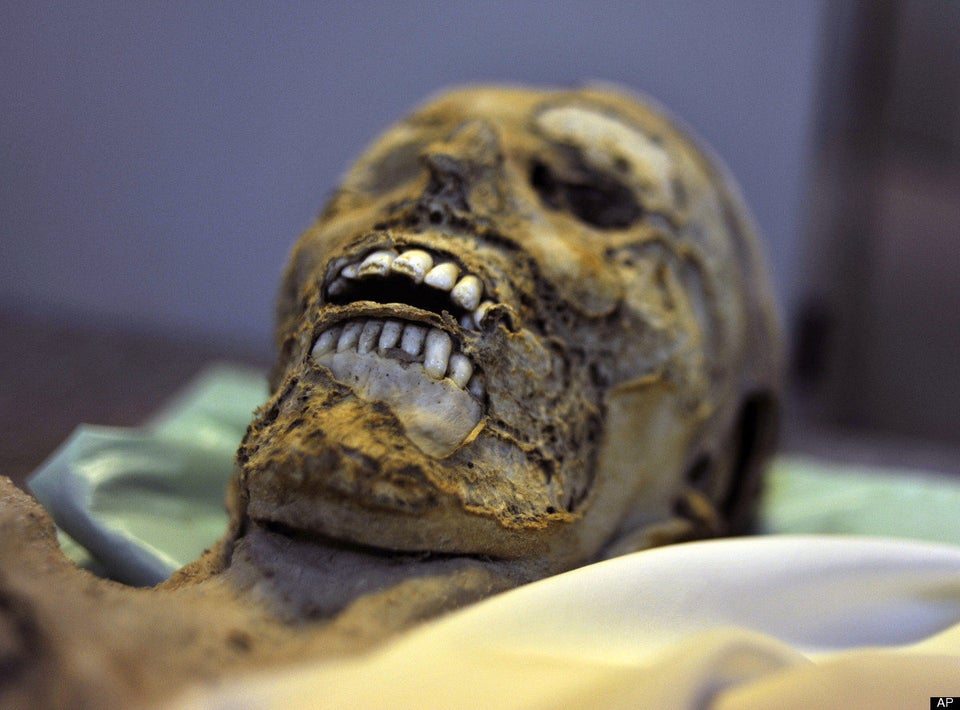What killed King Tut? And what happened to his body afterward?
British archaeologist Howard Carter first discovered the Egyptian pharaoh's well-preserved mummy in 1922. Ever since, scientists have tried to figure out what killed the pharaoh, who reigned for 10 years until his death at age 19 around the year 1324 B.C. Theories include everything from epilepsy to blunt force trauma.
But there's never been a clear consensus.
Now British egyptologist Dr. Chris Naunton, director of the Egypt Exploration Society, has thrown his hat into the already-crowded ring. A new documentary will present his findings, which suggest King Tut died in a chariot accident -- and then later spontaneously combusted inside his sarcophagus due to a botched embalming.
Holy smokes!
How did Naunton reach such a wild conclusion? It all started with a bit of flesh -- believed by Naunton to have belonged to King Tut -- found in the office of British anthropologist Dr. Robert Connolly, a member of the team that X-rayed Tutankhamun's remains in 1968. Naunton and forensic archaeologist Dr. Matthew Ponting used an electron microscope to examine the sample and determined that the flesh had been burned, The Independent reported. Chemical analysis by the researchers suggested that a reaction involving embalming oils caused Tut to burst into flames.
"The charring and possibility that a botched mummification led [to] the body spontaneously combusting shortly after burial was entirely unexpected, something of a revelation," Naunton says in the documentary, according to the Radio Times.
While Carter's original notes on the discovery of Tut's tomb mention that the mummy's flesh appeared burned, they provided no explanation for the burn.
Along with a team of researchers from the Cranfield Forensic Institute in Swindon, England, Naunton also analyzed scans of King Tut's remains. Computer simulations run by the team showed that serious injuries sustained on one side of the ruler's body were consistent with a traumatic blow to the torso from the wheel of a chariot.
While other researchers have proposed that Tut succumbed to a chariot accident, Naunton is the first to simulate the crash and to argue that the crash crushed the boy's heart, according to a written statement released in advance of the documentary.
Not everyone agrees that Tut's injuries were caused by a chariot crash. German geneticist Carsten Pusch told National Geographic in 2010 that DNA analysis revealed King Tut was sickly and probably suffered from both malaria and a bone disorder.
"He was not a very strong pharaoh. He was not riding the chariots," Pusch said at the time.
A.R. Williams, a writer at National Geographic, noted that King Tut was buried in a linen cap, jewelry and layer upon layer of delicately dried flower and berry garlands. "If there had been a fire, might the linen and the garland have been toast too, burnt by the blazing hot gold [of Tut's coffin]?" Williams asked.
To learn more about Naunton's discoveries, watch the Channel 4 documentary "Tutankhamun: The Mystery of the Burnt Mummy," premiering on Nov. 10.
